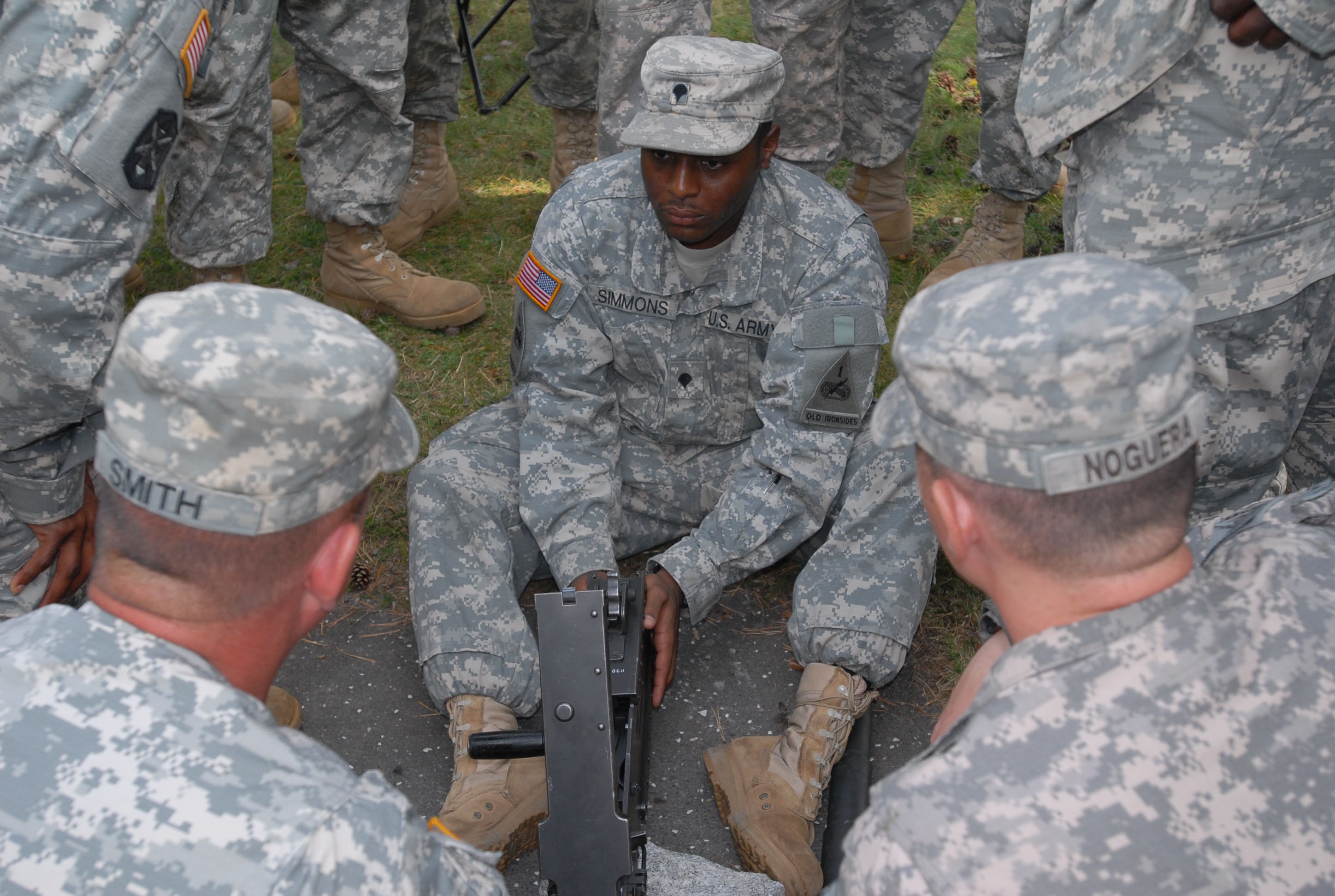Title 50 Military - The Beriev A-50 (NATO reporting name: Mainstay) is a Soviet early warning and control (AEW&C) aircraft based on the Ilyushin Il-76 transport. Designed to replace the Tupolev Tu-126 "Moss", the A-50 first flew in 1978. Its existence was revealed to the Western bloc in 1980. Adolfas Tolkachiov.
The 15-person crew on the mission receives data from Liana's large surveillance radar, whose antenna is housed in a 9-meter (30-foot) diameter rotodome in the upper hull.
Title 50 Military

The A-50 can carry up to t fighters for air-to-air or air-to-ground attack missions. The A-50 can fly for four hours at a distance of 1,000 kilometers (620 miles) from the base and has a maximum take-off weight of 190 tons (420,000 pounds). The aircraft can be supplemented with Il-78 tankers.
General Dynamics Unit Wins Contract To Build New Light Tank For Infantry
The Vega-M radar was designed by MNIIP, Moscow and manufactured by NPO Vega. Vega-M can simultaneously track up to 150 targets at a range of 230 kilometers (140 miles). Large targets such as surface ships can be tracked at a distance of 400 kilometers (250 miles).
Development work on the modernized version of the A-50U began in 2003; State tests started in 2008. on September 10, with the Russian Air Force A-50 "37 Krasnyy" as the prototype. It replaces the analog avionics with a new digital avionics suite manufactured by Vega Radio Engineering Corporation that speeds up data processing and improves signal tracking and target detection. Crew rest, toilet and kitchenette are also included in the upgrade.
After completing joint state tests, Beriev delivered the first A-50U to the Russian Air Force. The aircraft "47 Krasnyy" RF-92957 was handed over at the Beriev plant in Taganrog in 2011. October 31
It was adopted by the crew of the 2457th Early Warning Aircraft Combat Operations air base in Ivanovo Severn (Aviabaza Boevogo Primiya Samolyotov Dal'nego Radiolokatsionnogo Obnaruzhiya), which is the only base with operational use of the A-516it. aircraft).
Mercenaries And War: Understanding Private Armies Today > National Defense University Press > News
The fourth A-50U "41 Taganrog" was delivered to the Russian Air Forces in 2017. March 7. The fifth A-50U "45 Krasnyy" was delivered in 2018. December 6. 7 aircraft were delivered in 2021. December. .
The A-50U upgrade forms the basis of the Beriev A-100 AEW&C concept. It will have a similar configuration, but with the new Vega Premier active electronically scanned array radar.
In 2015 In late December, an A-50 began operations over Syria, flying from Russia in support of Russia's military intervention in the Syrian civil war. "Black Shark" redirects here. For shark species, see Kitefin shark. For the Asian carp species, see Black sharkminnow.

The Kamov Ka-50 Black Shark (Russian: Чёрная акула, romanized: Chyornaya akula, English: Kite Shark, NATO reporting name: Hokum A) is a Soviet/Russian monoplane attack helicopter with a unique coaxial rotor system. Kamov design office. It was created in the eighties and in 1995 accepted to serve in the Russian army. Produced by Arsiev's Progress company. It is used as a heavily armed reconnaissance helicopter.
China Japanese Military, Wwii, 50 Sen, 1938 Title B (unc)
In the late 1990s, Kamov and Israel Aerospace Industries developed a tandem-seat cockpit version of the Kamov Ka-50-2 "Erdogan" (Russian: Ердоган, Turkish: Erdoğan) to compete in the Turkish attack helicopter competition. Kamov also developed another two-seat variant, the Kamov Ka-52 "Alligator" (Russian: Аллигатор, NATO reporting name: Hokum B).
The Ka-50 is a production version of the prototype V-80Sh-1. in 1987 December 14 the Council of Ministers of the USSR ordered the production of an attack helicopter.
The development of the helicopter was first reported in the West in 1984, and the first photo appeared in 1989.
1985-1986 operational tests showed that the pilot's workload was similar to that of a fighter-bomber pilot, allowing the pilot to perform both flight and navigation duties.
Journaling Diary Planner Clear Stamp Silicone Rubber
Like other Kamov helicopters, it features Kamov's signature coaxial counter-rotating rotor system, which eliminates the need for a deck tail rotor assembly and improves the aircraft's aerobatic performance - capable of loops, rolls and "funnel" (circle). where the aircraft maintains line of sight to the target by flying circles around it at different altitudes and airspeeds.
The absence of a tail rotor is a qualitative advantage, since a torque-compensating tail rotor can consume up to 30% of engine power. The Ka-50 deck gearbox presses a relatively small target into the ground.
To improve pilot survivability, the Ka-50 is equipped with an AE Zvezda (lit. Star) K-37-800 ejection seat, a rare helicopter feature.

Before the rocket disperses in the ejection seat, the explosive charges in the rotor disc blow off the rotor blades and the casing is lowered.
Chart: The World's Most Powerful Militaries
After initial flight tests and system tests, the council decided in 1990 ordered the first batch of helicopters. The attack helicopter was first publicly described as the Ka-50 in 1992. March. at a symposium in Great Britain.
The helicopter was introduced in 1992. August. "Mosaeroshow '92" was held in Zhukovsky. A second production example made its overseas debut at the Farnborough Airshow the following month, where it was shown with a werewolf on the steering wheel – giving it its popular nickname. "Werewolf". The fifth prototype, painted black, starred in the movie Чёрная акула (Black Shark), which gave the Ka-50 its nickname.
In November 1993, four production helicopters were flown to the Torzhok Army Aviation Combat Training Center to begin field trials. The President of the Russian Federation 1995 August 28 allowed the release of the Ka-50 with the Russian army. After the collapse of the Soviet Union, defense purchases were sharply reduced. As a result, only a dozen Ka-50s were delivered, instead of several hundred planned to replace the Mil Mi-24.
A single-seat configuration was considered undesirable by NATO. On the first two prototypes of the Ka-50, false windows were painted,
Jr. Nba Event Reaches Military Kids
Some analysts concluded that its primary mission was to hunt down and kill NATO attack helicopters as an aircraft of superiority, a worrying but expected Soviet move by NATO planners after a direct assessment of the J-CATCH program.
The Ka-50 and its modifications were chosen as a support helicopter for special forces, and the Mil Mi-28 became the main weapon of the army. Ka-50 production resumed in 2006. In 2009, the Russian Air Force received three units made from unfinished aircraft from the mid-1990s.
Since 1987 When the Ka-50 was ordered, it was known that the limited night capability of the original version would need to be upgraded to meet night attack requirements.

Originally, the Ka-50N was to be equipped with the Merkury Low-Light TV (LLTV) system. Due to a lack of funding, the system suffered delays and problems with reliability and capacity. As a result, the focus shifted to forward-looking infrared (FLIR) systems.
Comparing Western Supplies And Ukrainian Losses In The War Against Russia
Many variations were tried. In some models, the original Shkval was supplemented with a thermal imaging system, while others were completely replaced by the Samshit day and night system (also used on the Ka-52). Some of the displays included in the tests were manufactured by Frch SAGEM and Thomson companies. Kamov was forced to consider foreign analogues as a temporary substitute for domestic imaging systems due to their slow development.
And the Ka-50Sh (Russian: Шар, romanized: Shar, "ball"; because of the spherical FLIR turret). The first Ka-50Sh, which was the eighth pre-production aircraft, Bort 018, first flew in 1997. 4 March Kamov and Black Shark company logos were displayed on the d-flat fins and vertical tail. It featured the Samshit-50 system mounted in a 640 mm (25 in) diameter bullet under the nose. The Shkval system was moved to the area of the nose cone.
In 1997 Israel Aerospace Industries (IAI), in cooperation with Kamov's office, awarded the Ka-50-2 Erdoğan the $4 billion contract for 145 (later changed to 50) combat helicopters in a Turkish design competition.
The Ka-50-2 is a tandem cab variant of the Ka-50. The fixed Ka-50 gun was replaced by modern, Israeli-made "glass cockpit" avionics and a collapsible (for landing clearance) 30mm cannon mounted in the turret. It has combat aircraft equipment and advanced anti-tank missiles to ensure a high level of combat effectiveness. It is equipped with IAI's flexible modular avionics suite that can be easily adapted to meet TLF's operational requirements and offers growth potential.
Pdf) National Surveys Of Military Personnel, Nursing Students, And The Public: Drivers Of Military Nursing Careers
IAI and Kamov flew this variant with IAI Core Avionics. These flights demonstrated the helicopter's "glass cockpit" with multifunction displays and a control and display unit (CDU) controlled by centralized mission computers. Its flight navigation and the performance of the helicopter's Multi-Mission Optically Stabilized Payload (HMOSP) targeting system were also tested. Demonstration flights included demonstrating night mission capability using night vision goggles (NVG) and a day/night targeting system.
Turkey initially chose an upgraded version of the Bell AH-1 SuperCobra over the Erdogan, Eurocopter Tiger, AH-64 Apache, Del Rooivalk and A129 Mangusta. In point D, the contract was concluded with A129 in 2007.
In the early 1980s, when comparative tests of the V-80 (prototype of the Ka-50) and the Mi-28 were conducted, Kamov's design team made a proposal to create a special helicopter that would perform battlefield reconnaissance and target designation. , to support and coordinate group attack helicopter operations based on the Ka-60. But the economic difficulties that hit the nation in the late 1980s got in the way
Us code title 50, non title 50 agencies, title 50 usc, military doctor rank title, title 50, title 50 authority, title boxing military discount, cfr title 50, military title, military title 10, what is title 50, military title ranks
0 Comments